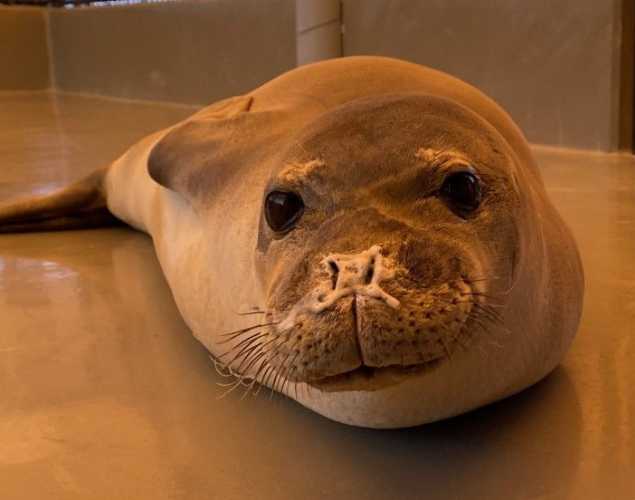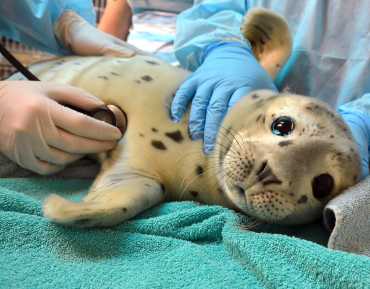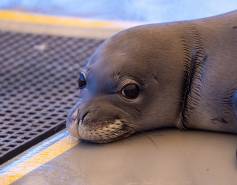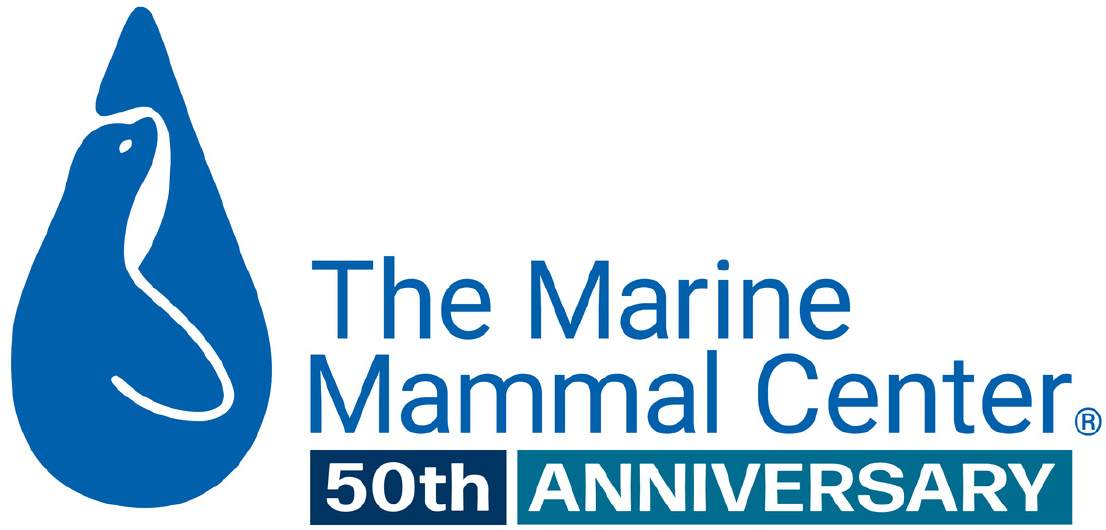
NOAA: Hooked Juvenile Monk Seal Rescued from Maui Beach
- Species conservation
- Entanglement
Reposted from NOAA Fisheries Hawaiian Monk Seal Updates: April 13, 2022
Thanks to quick responses by NOAA Fisheries, our partners, volunteers, and the public, the hooked juvenile male monk seal RL72 is now hook-free and safely rehabilitating at The Marine Mammal Center’s Hawaiian monk seal hospital and visitor center on Hawaiʻi Island, Ke Kai Ola.
Members of the public first caught sight of RL72 on Maui’s Kapalua Oneloa Beach the morning of March 30. He had approximately 3-4 feet of monofilament line trailing from his mouth, suggesting he ingested a hook. The public reported the incident to the NOAA Marine Wildlife Hotline and provided photos from a camera zoom lens, which clearly showed both the fishing line and the seal’s flipper identification tag.
Maui staff from NOAA Fisheries and State of Hawaiʻi Department of Land and Natural Resources (DLNR) initiated an on-the-ground response.
Ingesting a hook can be life-threatening for a seal, and prompt removal is critical to survival. So NOAA Fisheries, DLNR, The Marine Mammal Center (the Center), and the U.S. Coast Guard prepared to provide veterinary and logistical support to capture RL72 from the Maui beach and provide him life-saving medical care at Ke Kai Ola.
A Challenging Rescue
Rescuing RL72 was no simple matter. The vehicle parking area was far from the seal and up a hill. Rather than try to carry the 400-pound load (RL72 in a transportation cage) across sand, the team decided the boardwalk route was the best option—though this option still required a trek uphill via a short, narrow trail.
The difficulties didn’t end there. The last leg of the route was a staircase that was simply too narrow to fit the seal’s cage and its haulers. Thankfully, the team found a nearby property owner willing to provide an alternate route through a locked easement near the stairs.
Troubleshooting these logistical challenges took the better part of the day. As evening started closing in, the team put their meticulous plan in action—capturing RL72, carrying him to the vehicle, and driving him to the DLNR Division of Aquatic Resources facility. NOAA Fisheries staff stayed with the seal overnight, checking in on him every hour to make sure he was OK.
The next day, NOAA Fisheries and partners boarded RL72 on a U.S. Coast Guard C-130 plane, and the seal flew from Maui to Ke Kai Ola on Hawaiʻi Island.
And a Complex Hook Removal
“The successful effort to dehook RL72 was quite complex and required surgery under anesthesia to remove the hook from the animal’s esophagus,” said Dr. Sophie Whoriskey, the Center’s Hawaiian Monk Seal Conservation veterinarian.
This was an incredible team effort to help give this suffering monk seal a second chance at life and is a testament to the ongoing partnerships to help save this endangered species.
After the surgery on April 7, the Center’s veterinary experts reported that RL72 was stable, comfortable, and alert. The team noted RL72 is in great body condition and plans to give the seal antibiotics, fluids, and pain medications as he recovers post-surgery.
In addition, analysis from a series of blood samples taken during the initial care process showed no signs of illness or disease. No estimated timetable for release has been determined. The seal will be assessed regularly to determine when his recovery from the surgery is complete and release is appropriate.
Since 2014, the Center has rehabilitated and released 37 monk seals, most of which have been rescued from and returned to the Northwestern Hawaiian Islands as part of the Center’s partnership with NOAA Fisheries, utilizing resources in the area to identify seals in need, rescue and rehabilitate them, and give them a chance to return to their ocean home.
Approximately 30 percent of Hawaiian monk seals that are alive today are due to conservation efforts led by NOAA Fisheries and partners. And this happy ending would not have been possible without our partners, as well as the public’s prompt reporting.
This story is also a reminder to report any seal—even those that do not appear to need help—to the statewide NOAA Marine Hotline at (888) 256-9840. Additionally, we recommend these best practices to reduce injuries to monk seals when fishing.
Header image © The Marine Mammal Center / NOAA permit #18786
Yes, I want to save a life!

Yes, I want to save a life!
You’ll be giving sick and injured animals the best possible care at the Center’s state-of-the-art hospital. With your gift today, you are giving a patient a second chance at life in the wild.
See Our Latest News
{"image":"\/Animals\/Patients\/Hawaiian monk seals\/2025\/cropped-images\/d-ru28release-exam-at-ke-kai-ola111025photo-by-giancarlo-rulli-c-the-marine-mammal-center-noaa-permit-24359-0-0-1270-992-1764620886.jpg","alt":"","title":"Bird Flu Vaccine Trial Offers Hope for Protecting Hawaiian Monk Seals","link_url":"https:\/\/www.marinemammalcenter.org\/news\/bird-flu-vaccine-trial-may-offer-hope-for-protecting-hawaiian-monk-seals","label":"News Update","date":"2025-12-01 08:13:00"}

Bird Flu Vaccine Trial Offers Hope for Protecting Hawaiian Monk Seals
December 1, 2025
Read More{"image":"\/Animals\/Patients\/Hawaiian monk seals\/2021\/hms-pp08-by-sheila-latta-c-the-marine-mammal-center-noaa-permit-18786.jpg","alt":"Hawaiian monk seal","title":"The New York Times: Inside the Bird-Flu Vaccine Trial for Monk Seals","link_url":"https:\/\/www.marinemammalcenter.org\/news\/the-new-york-times-inside-the-bird-flu-vaccine-trial-for-monk-seals","label":"In the News","date":"2025-12-01 01:00:00"}

The New York Times: Inside the Bird-Flu Vaccine Trial for Monk Seals
December 1, 2025
Read More{"image":"\/Animals\/Wild\/Sea otter\/so-wild-morro-bayphoto-c-brian-simuro-20.jpeg","alt":"Sea otter and pup","title":"Watch a Sea Otter Pup Reunite With Its Mother","link_url":"https:\/\/www.marinemammalcenter.org\/news\/watch-sea-otter-pup-reunite-with-its-mother","label":"News Update","date":"2025-11-14 10:35:41"}

{"image":"\/Animals\/Wild\/Sea otter\/sea-otter-photo-c-brian-simuro.jpeg","alt":"Sea otter","title":"AP News: Baby sea otter is reunited with mother in central California after dramatic rescue","link_url":"https:\/\/www.marinemammalcenter.org\/news\/ap-news-baby-sea-otter-is-reunited-with-mother-in-central-california-after-dramatic-rescue","label":"In the News","date":"2025-11-14 09:46:34"}

AP News: Baby sea otter is reunited with mother in central California after dramatic rescue
November 14, 2025
Read Moreentanglement
Sophie Whoriskey
Hawaiian Monk Seal


